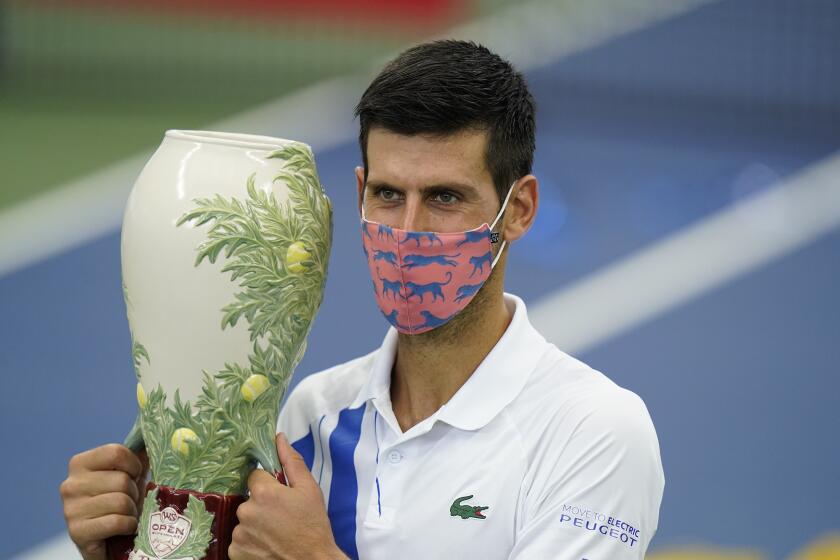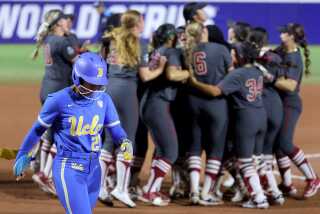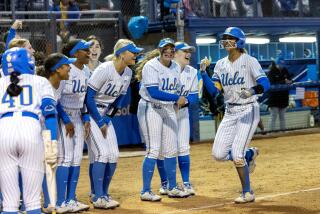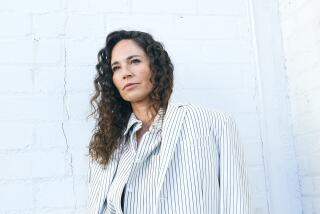Column: Fit and confident Jennifer Brady continues ascent in tennis at U.S. Open
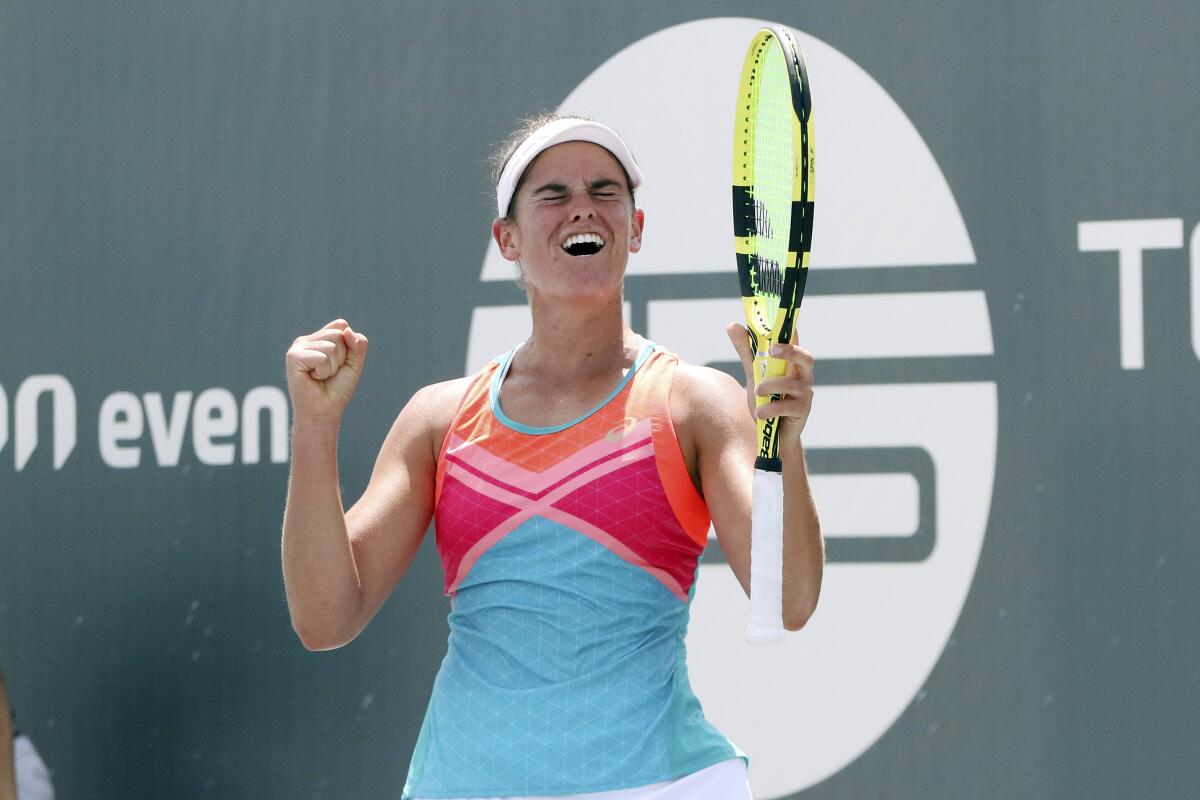
- Share via
Jennifer Brady knew that by reaching the final at the Top Seed Open in Kentucky last month her ranking would improve enough to secure her a spot among the 32 seeded women at this year’s U.S. Open. She also knew that her seeding in New York would get a nice bump after she won the Kentucky title, her first Women’s Tennis Assn. singles championship.
Still, she wasn’t sure where she’d land in her first Grand Slam tournament as a seeded player — and she missed the good news on first glance.
“To be honest, when the draw came out I was looking for my name and I started looking at No. 32 seed and then it was like, ‘OK, where am I?’” she said. “And I kept looking and then saw I was seeded 28th. I was really shocked.”
The pandemic-influenced absence of many elite players contributed to Brady’s ascent, and she didn’t waste her good fortune. Hitting 23 winners and 14 unforced errors in her first-round match Monday, she won the final six games in a 6-3, 6-2 first-round victory over Anna Blinkova. “If you look at the score it doesn’t look very competitive, but I think it was a pretty tough match,” she said.
For Brady, who lost in the first round at Flushing Meadows each of the past two years, it was another encouraging step in the climb she launched late last year by leaving Florida to work with coach Michael Geserer in Regensburg, Germany.
The U.S. Open tennis tournament begins Monday under the specter of the novel coronavirus. Can Serena Williams tie Margaret Court’s Grand Slam record?
She knew no one there. She didn’t speak the language. She didn’t have a winter coat. Brady, who turned pro after she played for UCLA’s 2014 NCAA team title as a sophomore, knew only that she had to take charge of her life and career if she wanted to be more than the player who ended 2018 ranked No. 116 in the world.
Her big serve and a heavy forehand she can hit with great spin should have carried her closer to the top. She hoped attentive coaching and a new perspective would help her get there. “There was a time where I was just like, ‘OK, what can I do to give myself the best opportunity to see where I can go in tennis? How can I achieve or maximize my potential?’” Brady, 25, said during a phone interview.
“It was a process of over a few months. I was thinking about finding a coach and I was able to find a coach and he was based out of Germany, and I had no problem going over there training if I know this is worth it and is going to make me better. The worst that could happen is I don’t like it. I really, really enjoyed it and was able to get a lot better.”
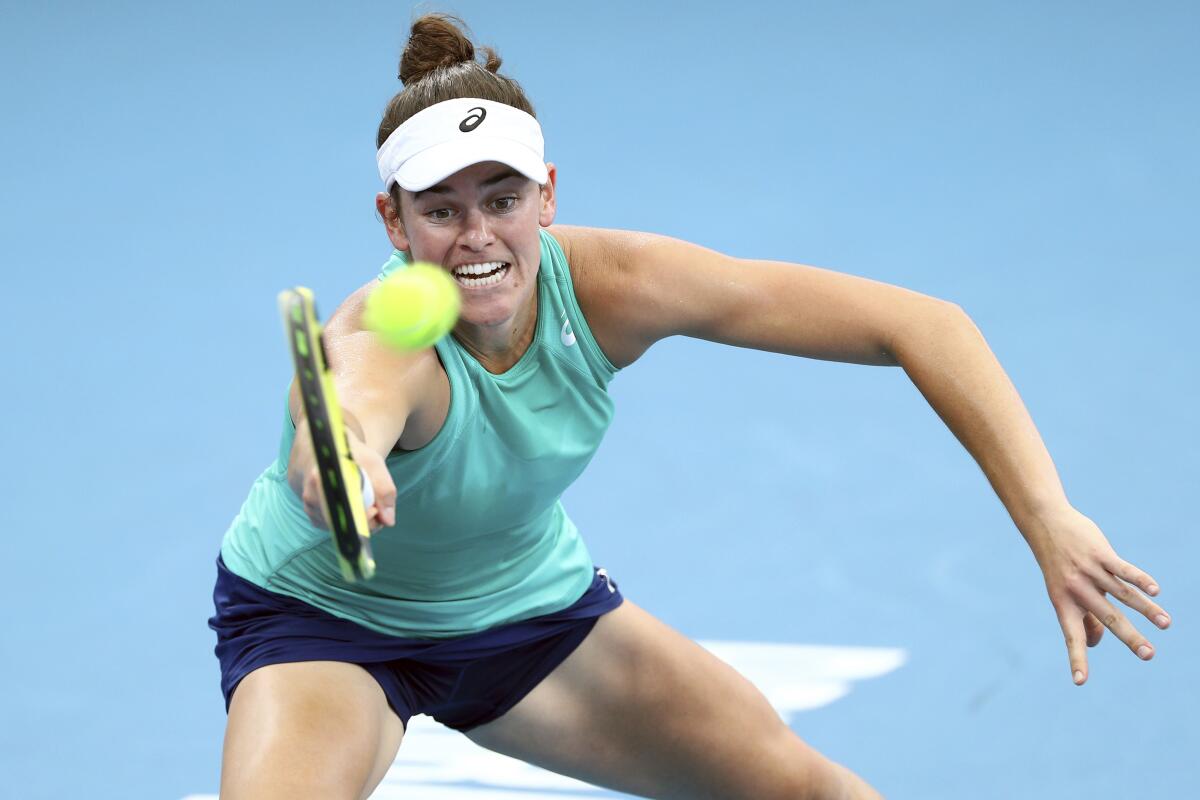
Improvement came quickly. More fit and consistent, she beat Maria Sharapova and world No. 1 Ash Barty at Brisbane, Australia, in January before she lost to Petra Kvitova in the quarterfinals. She also defeated Elina Svitolina, Marketa Vondrousova and Garbine Muguruza in Dubai in February before she fell to Simona Halep in the semifinals. The COVID-19 pandemic shut down the tour in March, but Brady played World Team Tennis and was dedicated to her conditioning, which contributed to five straight-set wins in her Kentucky title run.
Geserer didn’t break down her game. “It was more building up from where I was coming in at,” said Brady, now No. 41 in the world. “It was just like tapping into different ways of looking at the game and really honing in on my game. It was different just having a personal coach who’s able to just focus only on one player, as opposed to where I’d been with the [U.S. Tennis Assn.] and having several players to a coach. It’s the federation and they can only do so much.
“When you reach a certain point I feel like you have to go outside and find your own resources and coach and trainer in order to make it to the top.”
It wasn’t the first time Brady forced herself out of her comfort zone. Stella Sampras-Webster, UCLA’s head coach, remembers Brady was quiet and lacked self-assurance when she arrived on campus. Brady had friends on the team but wasn’t comfortable meeting new people or speaking to professors.
“She had to be assertive and ask questions, and that was something she had to learn to do,” Sampras-Webster said. “But when she left, we had a little banquet at the end of her second year and she was the one who spoke up, of all the players. She addressed the athletic department, other coaches, donors, and shared her experience she had at UCLA. It made us all so proud to see the growth that she had. All of us, even her teammates, were like, ‘Oh my gosh, that was Jenny.’ It was really neat.”
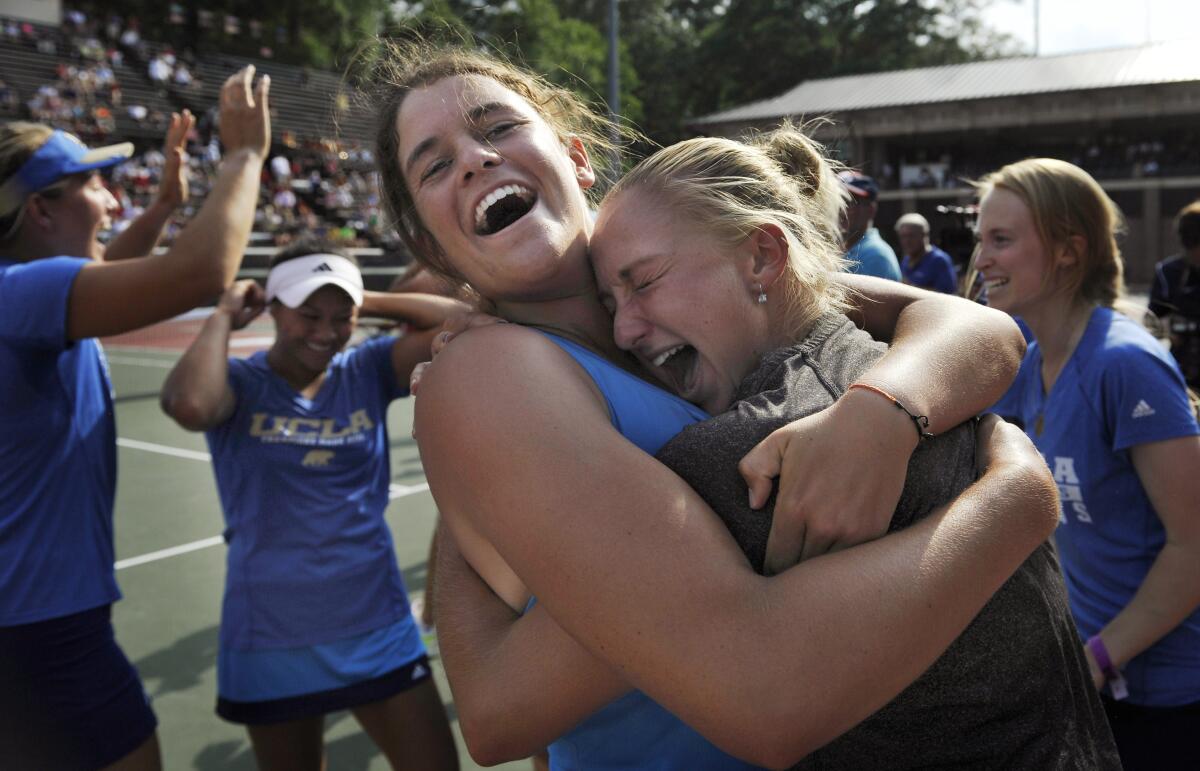
Brady said Sampras-Webster and associate head coach Rance Brown “helped me find my way” at UCLA, and they keep in touch. They spoke via Zoom last week. “We knew she would be a top-100 kid but she definitely had more to grow,” Sampras-Webster said. “She could be top 50, and she was the type of player who loved tennis. She would always hang around the locker room, always hang around the weight room. ... As long as she liked the lifestyle of traveling, which she does, we knew she would stay in for the long run, and it was just a matter of time when she would make these jumps.”
The time appears to be now. “I think she’s believing in herself, that she can play against the top players in the world,” Sampras-Webster said. “Keep herself healthy and the sky’s the limit because she definitely has all the tools, and it looks like she’s handling all the pressure well. She’s super fit, so there’s no reason why she can’t make another jump.”
Brady’s second-round opponent Wednesday will be San Francisco native CiCi Bellis. They’re friends and occasional practice partners. “She’s playing really well,” Bellis said. “I’m ready for her to play as well as she’s been playing.”
The key is that Brady is ready to play this well, or better. The next time she looks at a draw sheet she won’t be surprised at getting a prime seeding.
More to Read
Go beyond the scoreboard
Get the latest on L.A.'s teams in the daily Sports Report newsletter.
You may occasionally receive promotional content from the Los Angeles Times.

